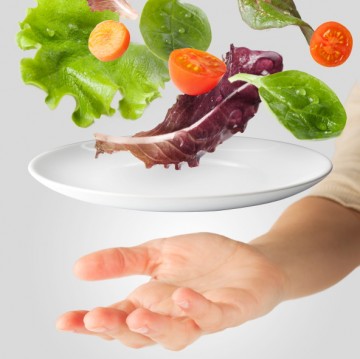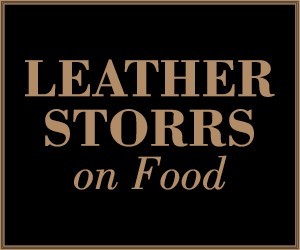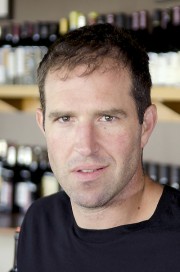Leather Storrs: How To Play With Your Food (And Not Get Burned)
Tuesday, October 21, 2014

iStock
For a naïve cook, fresh off an English degree, this “Play” signified the collision of three of my favorite things: words, food and humor. It was a “knuckle sandwich” (butter poached Lobster meat from the joint of the claw with fines herbs mayo on toasted brioche) of "Knowledge."
Keller had a nimble, mischievous mind, but more importantly, he was dedicated to the pursuit of perfection and the mastery of technique. I liked the jokes.
Sometimes I wish that the now me could go back and punch the then me into some perspective. Because inevitably, the added ingredients- words and humor- can muddy up some nice food.
Playing With Food
In 1995, however, "Play" was more silly and less scientific - gastronomy had yet to be molecular-ized. “American Cuisine” was too young to be cocky, nevertheless U.S. Chefs like Charlie Trotter, Gray Kunz, Alfred Portale and Keller were receiving International acclaim. Portale changed plating with death-defying towers of food, Kunz and Trotter introduced a global pantry with surgical precision and Keller rakishly and technically re-imagined classic French. Thanks to Portale, one of my first jobs was at a restaurant whose motto was “go vert(ical) or go home”.
If your food didn’t go up, it got turned on its side. Recognizable dishes got a wink and a twist. Celery gelee, with walnut bread crisps and roasted apple? Well I’ll be, that’s a Waldorf salad! Technique and talent, approaching the caliber of the finest European kitchens was coupled with whimsy, bravado and pyrotechnics. Chefs became stars and American Cuisine thought it was pretty sweet. Until it realized that a Spaniard had discovered a new frontier.

A magical tool chest of enzymes and blenders, chemicals and thermal circulators gave chefs the ability to truly impose themselves on their food. Puns and transmogrification ran rampant. Wylie Dufresne, the hippy genius behind WD 50, offered “Knot Foie”: a terrine of Foie Gras, pureed and set with a mixture of stabilizers that was cut into strips and tied in a knot. But just because you can tie foie gras in a knot or solidify and deep fry mayonnaise (Wylie again) doesn’t necessarily mean you ought to do it.
Just Because You Can, Doesn't Mean You Should
Most chefs who tried their hand at this kind of cooking did it poorly, including me. I opened a restaurant committed to this fussy food called “Rocket” in 2006.
It went over like a Lead Zeppelin.
The new tools of the trade opened up a world of bad food jokes. Consider this: Blanch lettuce, puree it. Mix the puree with sodium alginate and disperse it into a calcium chloride solution which creates wiggly little spheres of lettuce. Dance these in a bowl with tiny diced shallots and miniature croutons and present this barren landscape to the customer. Magically produce a beaker of vivid green steaming froth made of peas and pour it into the bowl. Lettuce Pea, get it? Let us pee?
Just one problem: lettuce peas are awful. They feel weird and taste worse. I got the words, I got the humor, but I forgot the food. I don’t do that anymore.

Related Articles
- Leather Storrs: 2015’s Biggest Restaurant Openings
- Leather Storrs: How TV Influences our Changing Food Culture
- Leather Storrs: So You Want to be a Chef . . .
- Leather Storrs: Why Guinea Pigs Are A Perfect Protein
- Leather Storrs: Why Italy is the ‘Bull’ of Food




 Delivered Free Every
Delivered Free Every
Follow us on Pinterest Google + Facebook Twitter See It Read It